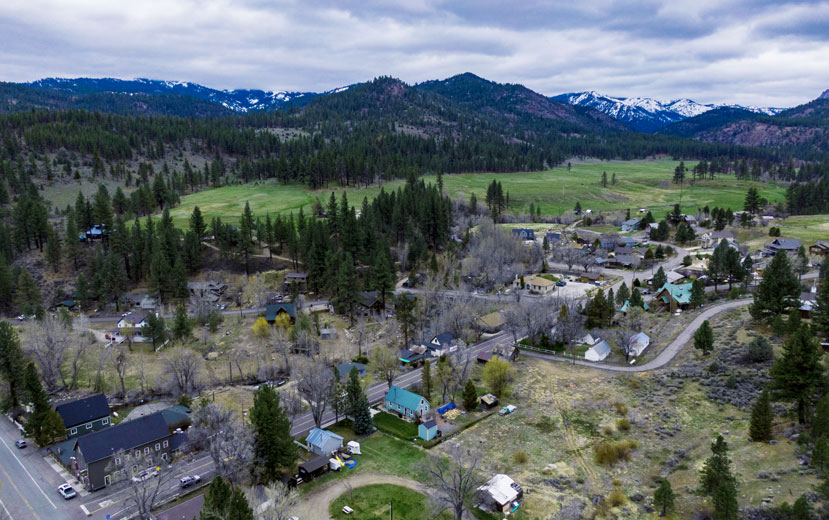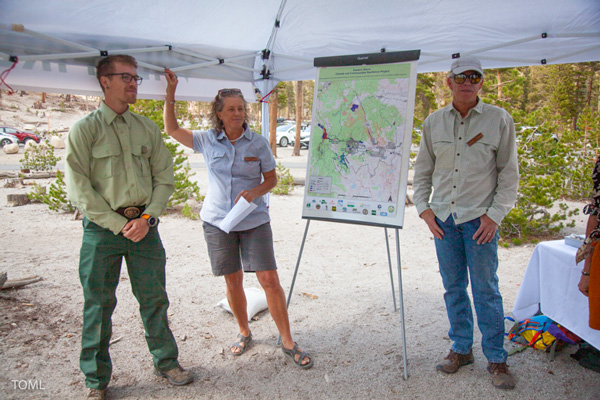
Over the last few years, the Sierra Nevada region has witnessed severe wildfire, drought, tree mortality, and extreme weather, which threaten our communities, economies, and ecosystems. In response, the Sierra Nevada Conservancy’s Watershed Improvement Program (WIP) advances wildfire- and forest-resilience strategies that restore landscapes and reduce risk to communities.
But in a vast, predominantly rural region, staff and organizational capacity remain a barrier to implement these strategies at an increased pace and scale. We need all hands on deck, and we need those hands to be equipped with the right tools and knowledge. The SNC’s WIP Capacity Program works to ensure that partner organizations across the Sierra Nevada have the skills, experience, and staff needed to develop, plan, and implement high-impact, forest-restoration and fire-resilience projects.
The Regional Forest and Fire Capacity Program (RFFCP) accelerates forest and wildfire resilience
In 2019, the SNC received a $1.9 million grant of Regional Forest and Fire Capacity Program (RFFCP) funding from the Department of Conservation to support forest- and wildfire-resilience planning, workforce expansion, and organizational capacity development. This capacity funding has allowed SNC to expand our support for organizations and efforts across the Sierra Nevada.
In a region that covers more than 25% of California’s land area, we are keenly aware of the critical role played by our partner organizations. Federal, state, and local agencies, tribes, resource conservation districts, fire-safe councils, watershed groups, and others are the boots-on-the-ground that prioritize, secure funding for, and implement landscape- and community-resilience projects. They also possess a deep understanding of local needs and priorities. The RFFCP strategy empowers these leaders and ensures that limited resources are invested in ways that make sense across varied social, ecological, and economic contexts.

Highlights from initial RFFCP investments in the Sierra Nevada
What our partners have been able to accomplish with support from the RFFCP is remarkable.
In two short years, organizations across the Sierra Nevada have used the initial RFFCP investment to advance the development of at least 23 fire-resilience projects, which collectively aim to treat over 66,000 acres. These organizations have already submitted more than $60 million in grant requests to funding agencies such as CalFire, the California Department of Fish & Wildlife, CalOES, and the SNC.
While Sierra Nevada RFFCP grantees are at different stages of their work, all are pursuing capacity-building efforts in line with local needs.
With support from the RFFCP, the Feather River Resource Conservation District became one of the first entities in the state to use CalVTP to complete CEQA permitting for a fuel-reduction project. During the Dixie Fire, the organization relied on expanded capacity to quickly pivot into emergency-response mode and support fire-suppression efforts on the Plumas National Forest. It has since refocused on post-fire recovery and restoration, where it is poised to play a critical role supporting efforts across public and private lands.
Another RFFCP recipient, the Sierra Corps Forestry Fellowship Program run by the Sierra Nevada Alliance, has now placed two cohorts of early-career conservation professionals with organizations across the region. In their roles, fellows ease staffing gaps and bottlenecks to accelerate the design, funding, and implementation of restoration projects. So far, Sierra Corps fellows have helped bring in approximately $9 million in grant funding and coordinated environmental planning for the restoration of 55,000 acres. Along the way, they have also organized projects focused on fuels reduction, fire mitigation, watershed protection for drinking and agricultural water, and reforestation, while engaging with hundreds of stakeholders across the region.
In the Eastern Sierra Nevada, RFFCP resources helped secure funding to launch the Eastern Sierra Council of Governments, a new Joint Powers Authority (JPA) capable of working across jurisdictions and at the scale of modern megafires. The funding will also create a local nonprofit, which will partner with the JPA to establish a local interdisciplinary NEPA team that can accelerate project planning.
These highlights demonstrate the early impact of recent capacity investments. Previously, some areas and organizations did not have sufficient resources to develop and formally propose wildfire-resilience projects. Now they do.
Better yet, these investments are likely to keep on giving, as local organizations continue to reap the benefits of additional staff and skills. Capacity funding is the seed, water, soil, and sunlight required to cultivate strong restoration partners across the Sierra Nevada, and these efforts are only just beginning to bear fruit.
Ramping up the restoration project pipeline with additional RFFCP funding
The SNC is currently expanding the work of the WIP Capacity Program, using an additional $7.77 million from the Department of Conservation that was allocated in last year’s early-action wildfire-resilience budget package. The next phase of the program will continue to strategically distribute funds throughout the region to accelerate project prioritization and planning. New focus areas will also include supporting organizational stability in a time of rapid expansion, engaging tribes and tribal entities, and using RFFCP dollars to leverage other funding sources.
Whenever possible, the SNC helps RFFCP recipients submit competitive proposals for planning and implementation grants to translate capacity investments into on-the-ground resilience. Our ultimate goal is to create a lasting project pipeline that delivers on community restoration and resilience priorities.
The early successes of the RFFCP have been recognized by California’s leaders. In addition to the early action investment, the state allocated an additional $50 million in the fiscal year 2021-22 budget, while also passing a law to codify the RFFCP as an official program within the Department of Conservation. With new resources and recognition of early success, RFFCP is poised to continue advancing regional capacity to build resilient communities and landscapes across the Sierra Nevada—and the state.

